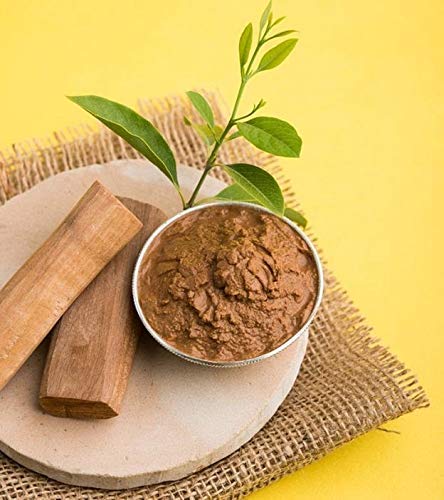- +033 2572 7171
- info@dhanvantary.com

4.5 Rating | 4500 Review

4.5 Rating | 4500 Review
Chandan is known as one of the oldest and precious plant with great fragrance. The scientific name of the plant is Santalum album. This belongs to the family Santalaceae. Chandan plant is an ever green plant that can grow up to 20 m attain girth up to 2.4 m wide with branches which are drooping and slender. The bark of the tree can be of dark brown color, red color, and dark grey or of black color in the young plants. In the older plants, these barks are with deep cracks and of red color from inside.

The sapwood of the stems is white in color and odorless. On the other hand, heartwood is of yellow brown color with strong fragrance. Leaves of the Chandan are ovate elliptical shaped, 3 to 8 cm long and 3 to 5 cm wide, usually present oppositely and have shiny green appearance from the upper side. These are glabrous and glaucous. The tips of the leaves can be either pointed or rounded. Its stalk is grooved and long up to 5 to 15 cm. flowers of the Chandan plant are of purple brown color and small in shape. The straw of the flowers are of red, green or violet color. These are 4 to 6 mm long with 6 terminal or axillary, unscented clusters of peniculate cymes. Its fruits are fleshy indehiscent, globose, purple to black in color, about 1 cm in diameter when ripe. These have a hard endocarp and scar which are smooth, stalk less and single seeded. There are two main varieties of sandalwood, one is Indian and other is Australian. In Indian one, Flowers flourish in the months of March and April. The fruits ripe in the cold season. In Australian, flowers flourish in December and January. Fruits appear in June to September. This plant requires approximately 20 to 25 inches rainfall every year and cannot tolerate water logging.
Kingdom
Plantae
Subkingdom
Tracheobionta
Superdivision
Spermatophyta
Division
Magnoliophyta
Class
Magnoliopsida
Subclass
Rosidae
Order
Santalales
Family
Santalaceae
Genus
Santalum
Chandan is found in countries like India, Indonesia, Australia and New Zealand. These flourish well from the sea level up to 1800 m in sandy, lateritic and loamy soil. Trees found on stony hills have high content of scent in their woods.
In India, it is found mainly in Karnataka and Tamil Nadu. In Tamil Nadu, it distributed over 3000 sq. kms in Javadis hills, Chitteri hills and Yelagri hills. It is also found in states like Orissa, Rajasthan, Uttar Pradesh, Bihar, Andhra Pradesh, Kerala, Maharashtra, Madhya Pradesh and Manipur.
|
Hindi / Sanskrit |
English |
||
|
Rasa |
Madhura, Tikta |
Taste |
Sweet, Bitter |
|
Guna |
Laghu, Rooksha |
Physical Property |
Light, Dry |
|
Virya |
Sheeta |
Potency |
Cold |
|
Vipaka |
Katu |
Metabolic Property (After Digestion) |
Pungent |
It helps to control and manage the kapha and pitta doshas.
|
Charak Samhita |
Vagbhata |
Sushrut Samhita |
|
|
|
